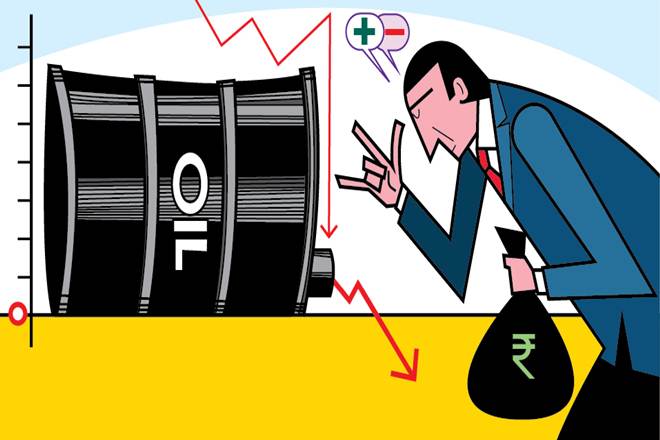For the first time in history, crude oil prices had fallen below zero. In other words, sellers were paying buyers to take deliveries to avoid storage cost. Let us look at the logic behind negative pricing and assess the impact from an investor’s point of view.
End of the contract effect
There are around 160 types of crude oil traded in the commodity market. Crude oil is essentially a physical commodity traded in the commodity market or over the counter but delivered at a physical location. It is traded in futures market with a predetermined price and predetermined date and delivery location. West Texas Intermediate (WTI) which is popularly known as US crude, is delivered at Cushing city in Oklahoma state. Last week, when the futures contract for WTI was coming to an end, no one wanted to take the physical deliveries, though there were thousands of delivery contracts already sold. The reason is simple: there is no storage space in Cushing.
So, other market participants on seeing the pressure from both the buyer and seller, started to quote lower and lower rates as they have to bring large trucks and store oil in far-off locations. Thus, producers or traders were basically paying $40 per barrel to other market participants to take the oil off their hands. This is purely owing to the end of the contract effect.
Impact on investors
Oil companies are some of the most important payers of dividends across financial markets worldwide, providing vital cash flow streams to pension funds and millions of smaller investors. There is a higher probability that oil companies will be forced to cut their dividends and stop their share buyback plans. We are already getting signals regarding dividend cut from large European oil companies.
India is the third largest consumer of crude oil and it imports almost 82% of its oil. But, falling global crude oil prices in the Indian basket (a weighted average of Brent, Oman, Dubai which is an indicator of the price of Indian crude oil imports) is trading at around $20.56 per barrel. Though the price is lower than previous levels, the government had already increased excise duties and taxes on auto fuels to supplement its revenue collections.
So, the common man is not going to benefit from the falling crude oil prices, and price of petrol and diesel will not go down in the foreseeable period. Inspite of a lower price of the Indian basket, there is no demand for oil owing to Covid-19, lock down, restricted movement, etc.
Crude is directly used in oil refining and oil marketing companies and extensively used in transport, aviation, industrial power, glass manufacturers, lubricants, petro chemical, plastics industry, FMCG, paint manufacturers, rubber / tyre manufacturers, etc. Low oil prices have a definitely positive impact on the above segments. However, there will be a negative impact on state-run oil producing companies, but oil marketing companies are relatively better placed because higher net profit margins are likely to offset the lower refining margins and volumes.
Thus, investors should pick up their investments in the segments as indicated above, to benefit in the short to medium run owing to the reduction in oil price.
The writer is a professor of finance & accounting, IIM Tiruchirappalli

